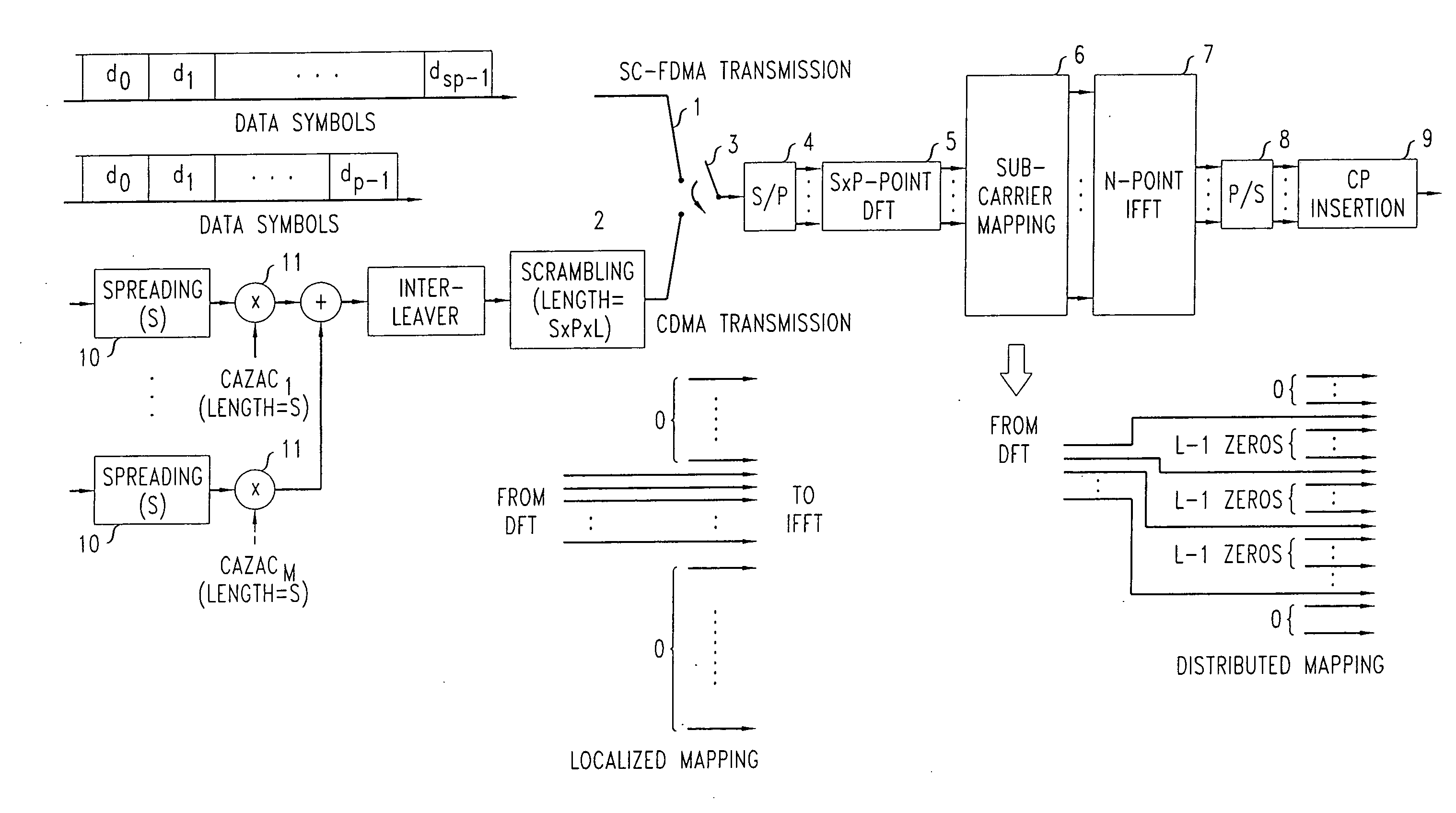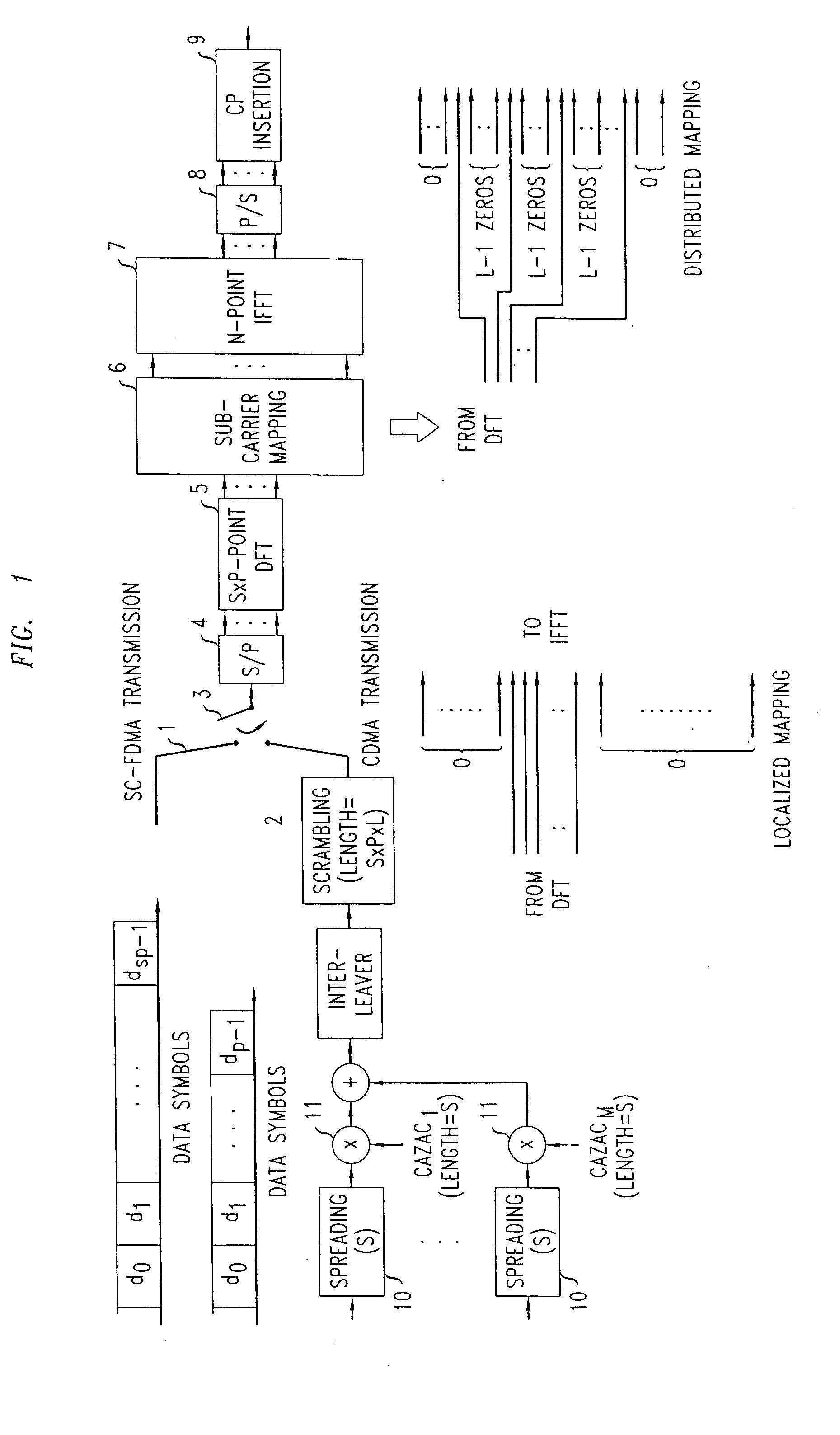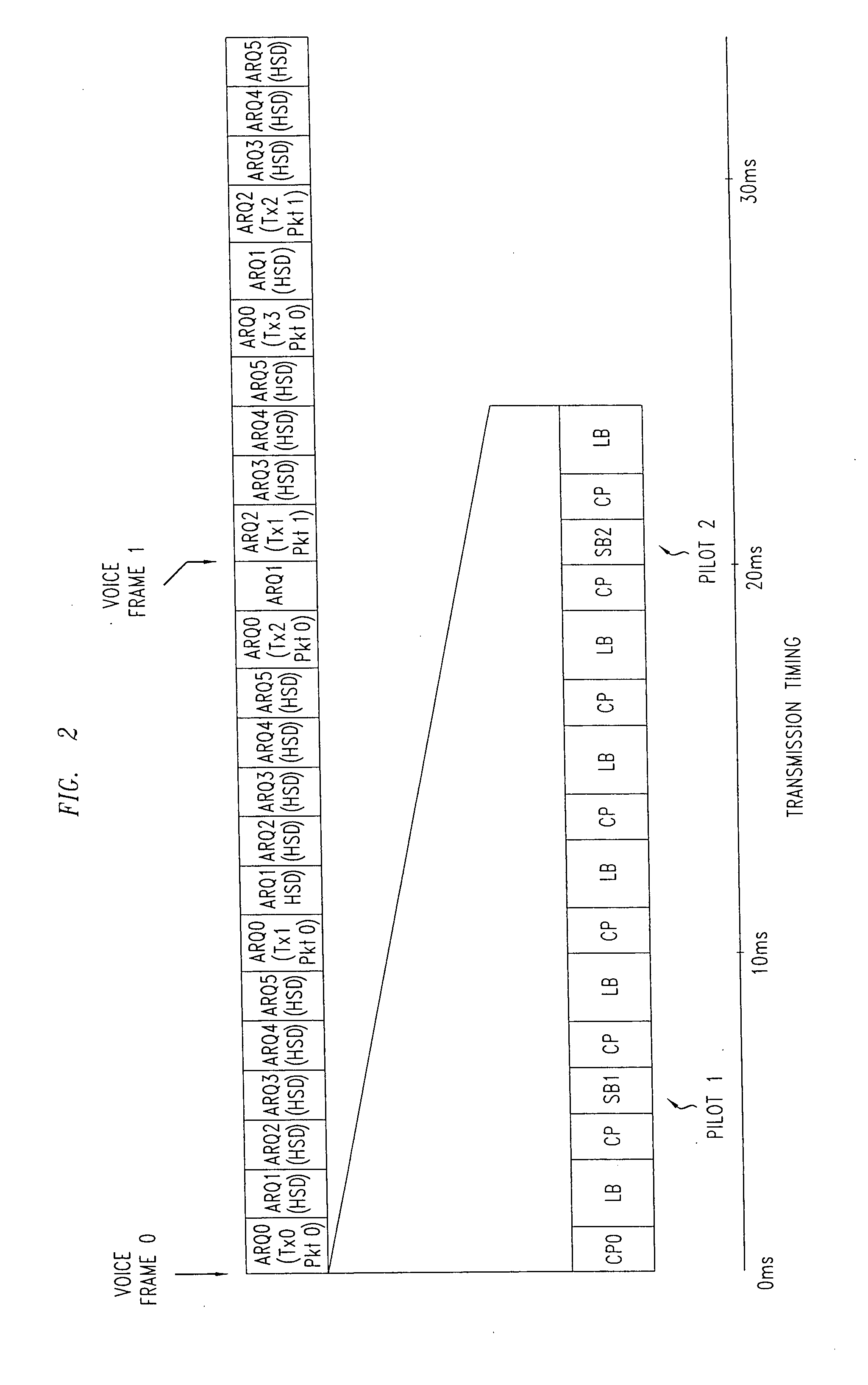Method and apparatus for packet wireless telecommunications
a packet wireless and wireless technology, applied in the field of packet wireless telecommunications, can solve the problems of low data rate traffic flow, large scheduling overhead, low channel utilization, etc., and achieve the effects of reducing transmission and reception latency, simple receiver structure, and large capacity
- Summary
- Abstract
- Description
- Claims
- Application Information
AI Technical Summary
Benefits of technology
Problems solved by technology
Method used
Image
Examples
Embodiment Construction
[0025]With reference to FIG. 1, a user equipment (UE) includes a transmitter for time multiplexing CDMA and SC-FDMA transmissions and transmitting them in the uplink of an LTE-compliant network. It includes first and second branches 1 and 2 to give different paths through the transmitter for high rate data traffic and voice traffic respectively. In the first branch 1, concerned with SC-FDMA transmission, a stream of data symbols d0, d1 to dsp−1 is applied via a selector 3 to a serial to parallel data converter 4, the outputs of which are then applied to a DFT 5. This is followed by sub-carrier mapping at 6, an N-point inverse fast Fourier transform (IFFT) 7 and a parallel to serial data converter 8. The cyclic prefix CP is inserted at 9 prior to transmission on the uplink to a base station. This is the mode used for data having less stringent latency requirements and fast data rates.
[0026]The transmitter also includes the second branch 2 for operation in the CDMA mode for voice traf...
PUM
 Login to View More
Login to View More Abstract
Description
Claims
Application Information
 Login to View More
Login to View More - R&D
- Intellectual Property
- Life Sciences
- Materials
- Tech Scout
- Unparalleled Data Quality
- Higher Quality Content
- 60% Fewer Hallucinations
Browse by: Latest US Patents, China's latest patents, Technical Efficacy Thesaurus, Application Domain, Technology Topic, Popular Technical Reports.
© 2025 PatSnap. All rights reserved.Legal|Privacy policy|Modern Slavery Act Transparency Statement|Sitemap|About US| Contact US: help@patsnap.com



